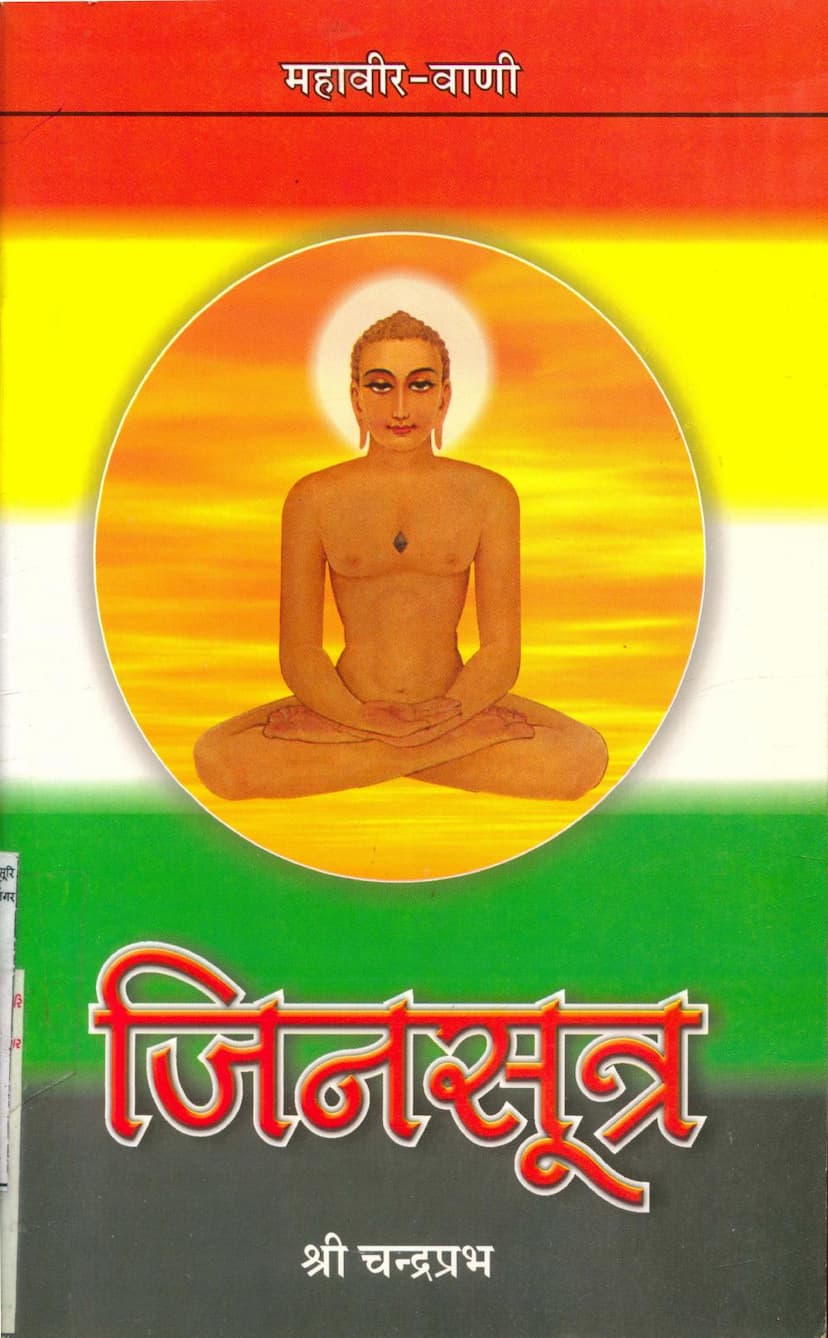Jinsutra
Added to library: September 2, 2025

Summary
This document is a summary of the Jain text "Jinsutra" compiled by Shri Chandraprabh. It was published by Shri Jain Shwetambar Nakoda Parshwanath Tirth on April 6, 2001, to commemorate the 2600th birth anniversary of Lord Mahavir.
The book aims to present the essence of Lord Mahavir's teachings in a simple and accessible manner for the general public. It is described as a pure distillation of the Agamas, offering guidance for a healthy, moral, and spiritual life.
The "Jinsutra" is structured into 27 chapters, each focusing on a specific spiritual concept or practice. These include:
- Mangalsutra: Verses of auspiciousness and salutations to the Arihants, Siddhas, Acharyas, Upadhyayas, and Sadhus, as well as the 24 Tirthankaras.
- Samsara-chakra-sutra: The cycle of birth, death, and suffering in the world, emphasizing the impermanence of worldly pleasures.
- Mithyatva-sutra: The nature of delusion and false beliefs, and how they lead one astray from the right path.
- Karma-sutra: The workings of karma, how it is bound, its consequences, and the eight types of karma.
- Raga-parihar-sutra: The renunciation of attachment and aversion as the root cause of suffering.
- Dharma-sutra: The essence of Dharma, highlighting the ten virtues of Jainism: forgiveness, humility, straightforwardness, truthfulness, purity, restraint, austerity, detachment, non-possession, and celibacy.
- Ahimsa-sutra: The principle of non-violence, emphasizing that all living beings wish to live and should be treated with compassion.
- Sanyama-sutra: The practice of self-control and discipline, both internal and external.
- Apramada-sutra: The importance of mindfulness and vigilance, warning against carelessness and negligence.
- Atma-sutra: The nature of the soul, distinguishing between the external self, the internal self, and the Supreme Soul.
- Moksha-marga-sutra: The path to liberation, emphasizing the importance of Right Faith, Right Knowledge, and Right Conduct.
- Ratna-traya-sutra: The three jewels of Jainism – Right Faith, Right Knowledge, and Right Conduct – as essential for liberation.
- Samyak-darshan-sutra: The significance of Right Faith and its eight angas (limbs).
- Samyak-gyan-sutra: The nature of Right Knowledge and its role in understanding reality.
- Samyak-charitra-sutra: The practice of Right Conduct and its importance in purifying the soul.
- Shravaka-dharma-sutra: The duties and vows of lay followers (Shravakas).
- Shraman-dharma-sutra: The conduct and principles of ascetics (Shramanas).
- Vrata-sutra: The five great vows (Mahavratas) and their significance.
- Samiti-Gupti-sutra: The five restraints (Samitis) and three controls (Guptis) for proper conduct.
- Avashyak-sutra: The six essential daily duties of a Jain.
- Tapa-sutra: The six types of external austerity and six types of internal austerity.
- Dhyana-sutra: The practice of meditation and its benefits.
- Anu-preksha-sutra: The contemplation of the twelve reflections or contemplations on the truths of life.
- Leshya-sutra: The six types of karmic dispositions (Leshya) and their impact on one's destiny.
- Gunasthana-sutra: The fourteen stages of spiritual development (Gunasthanas).
- Samlekhana-sutra: The practice of voluntary fasting and renunciation, especially at the end of life.
- Nirvana-sutra: The state of liberation (Nirvana) and its characteristics.
- Samapana: A concluding section summarizing the teachings and offering blessings.
The document also includes an introduction to Jainism, its origins, principles, and the differences between its major traditions (Digambara and Shvetambara), as well as a brief overview of the Nakoda Tirth, a prominent Jain pilgrimage site. The book emphasizes that living by the teachings of Lord Mahavir is a form of true worship and a path to a happy, moral, and spiritual life, ultimately leading to liberation.